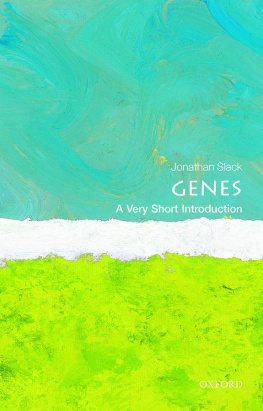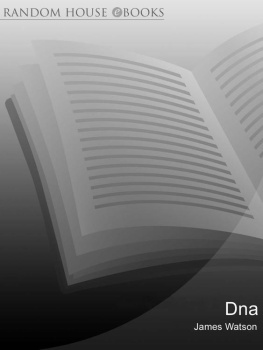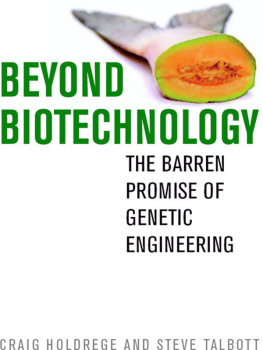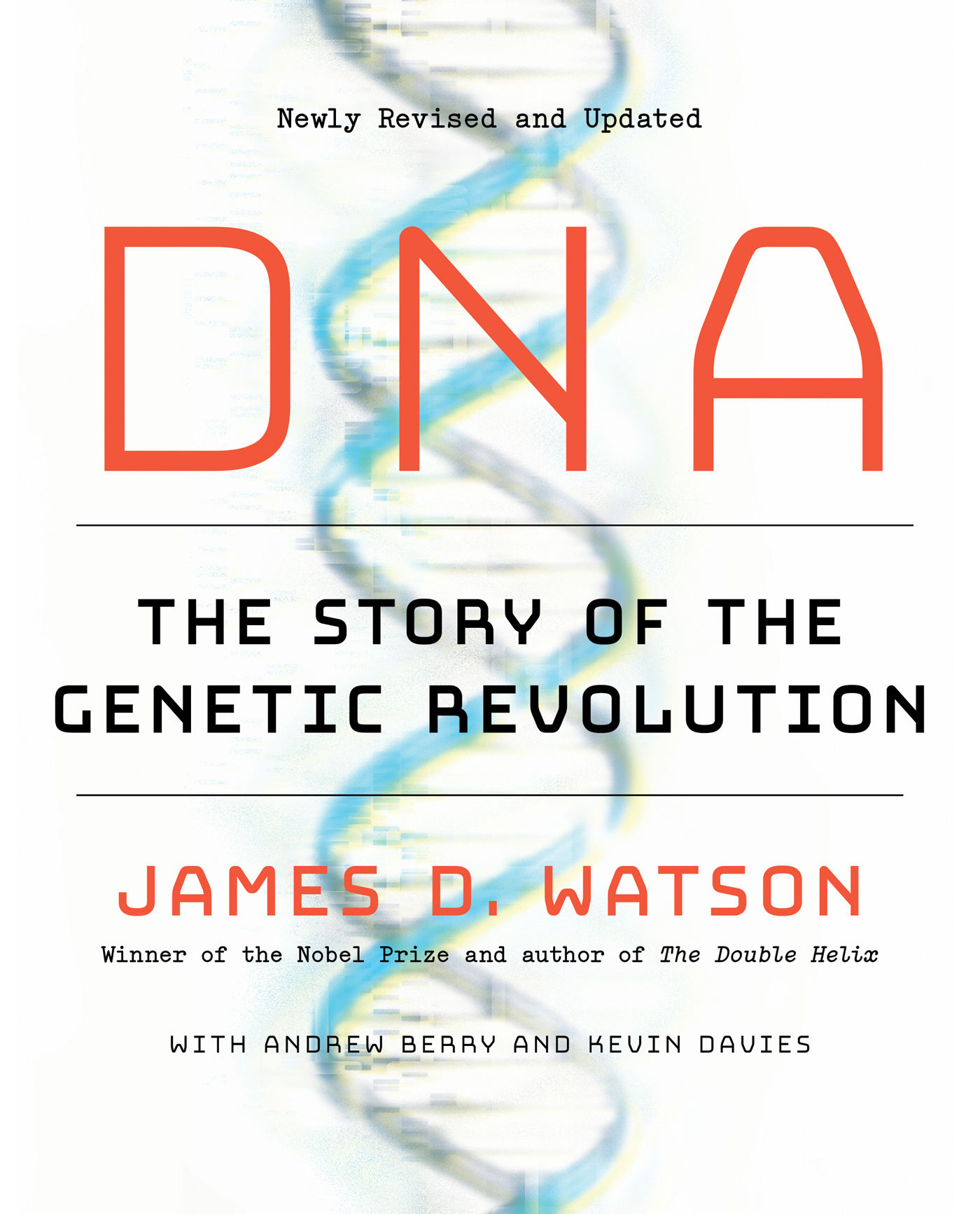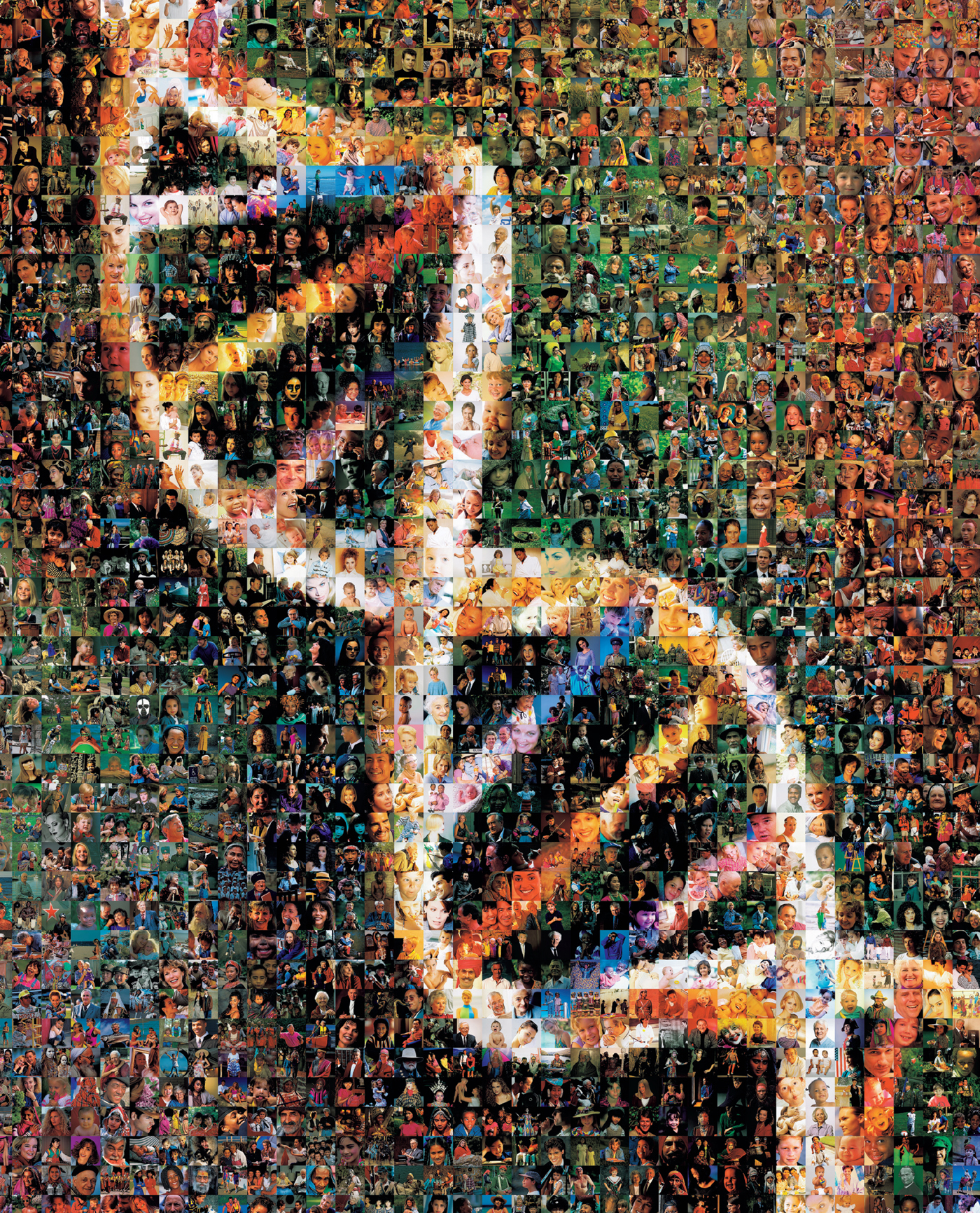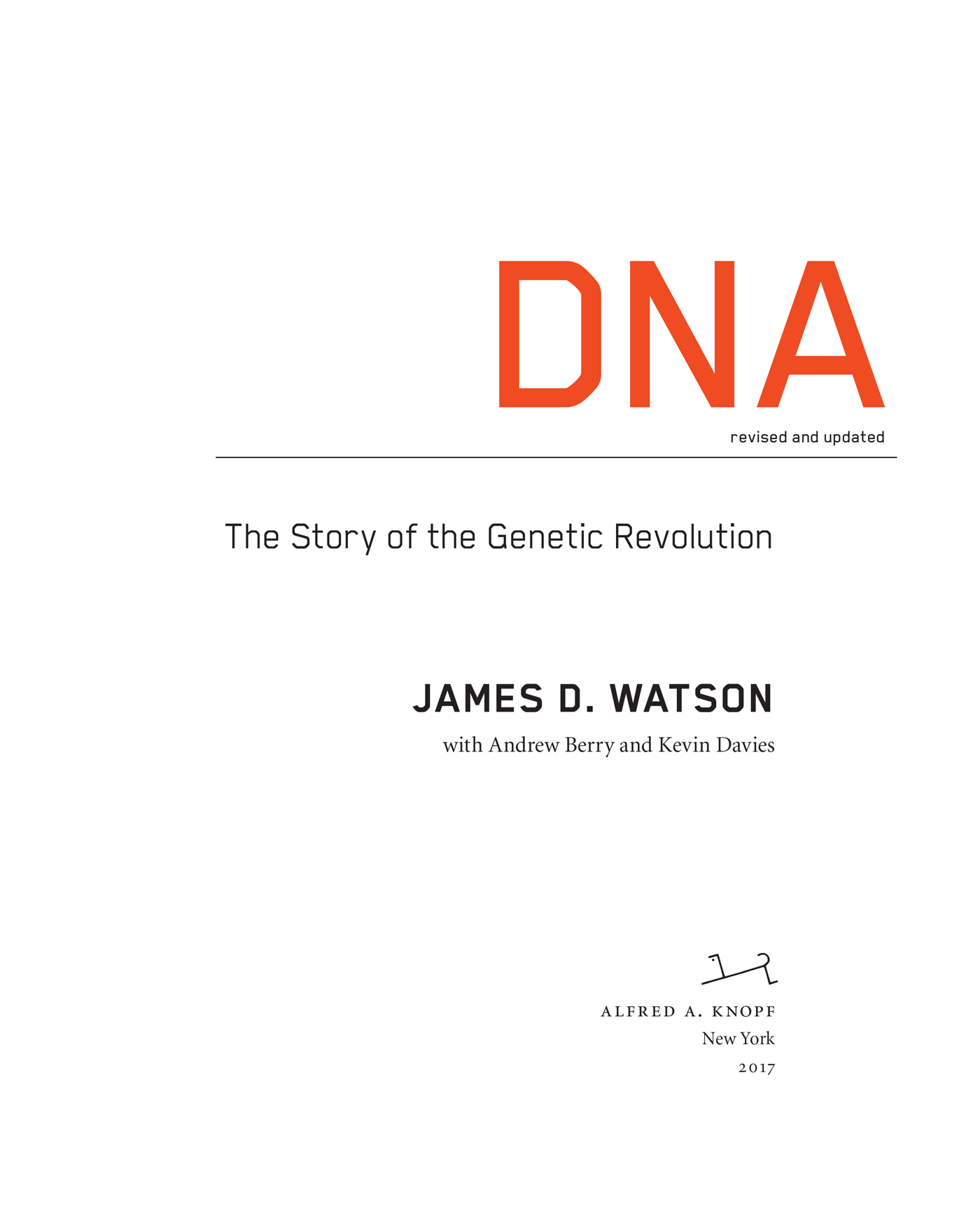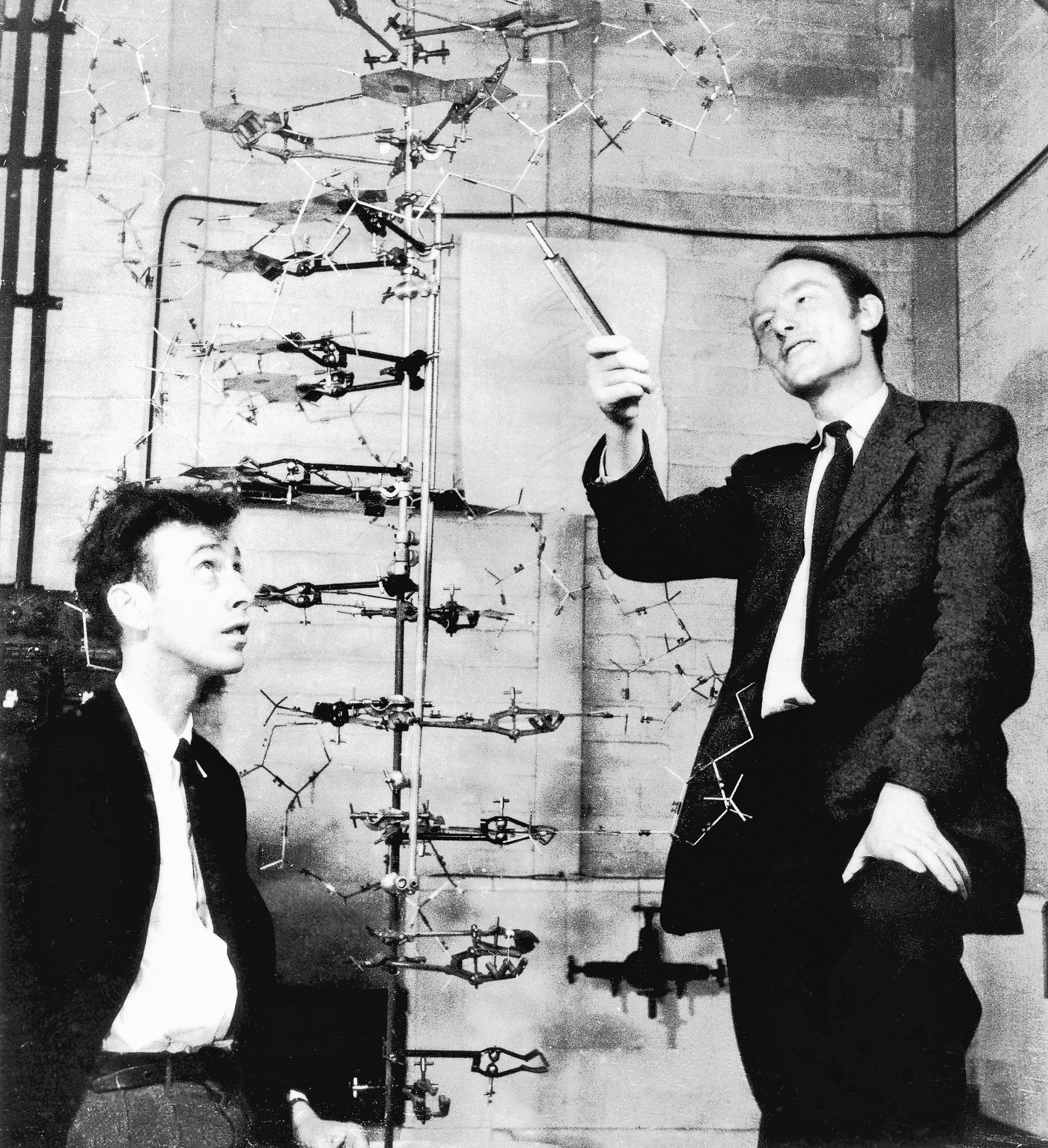ALSO BY JAMES D. WATSON
Molecular Biology of the Gene (1965, 1970, 1976, coauthor: 1987)
The Double Helix: A Personal Account of the Discovery of the Structure of DNA (1968)
The DNA Story: A Documentary History of Gene Cloning (coauthor: 1981)
Recombinant DNA (coauthor: 1983, 1992)
Molecular Biology of the Cell (coauthor: 1983, 1989, 1994)
A Passion for DNA: Genes, Genomes, and Society (2000)
Genes, Girls, and Gamow: After the Double Helix (2001)
DNA: The Secret of Life (2003)
Avoid Boring People: Lessons from a Life in Science (2009)
The Illustrated and Annotated Double Helix (2012)
Father to Son: Truth, Reason, and Decency (2014)
THIS IS A BORZOI BOOK
PUBLISHED BY ALFRED A. KNOPF
Copyright 2017 by James D. Watson
All rights reserved. Published in the United States by Alfred A. Knopf, a division of Penguin Random House LLC, New York, and distributed in Canada by Random House of Canada, a division of Penguin Random House Canada Limited, Toronto.
www.aaknopf.com
Knopf, Borzoi Books, and the colophon are registered trademarks of Penguin Random House LLC.
Library of Congress Cataloging-in-Publication Data
Names: Watson, James D., [date] author. | Berry, Andrew James, [date] author. | Davies, Kevin, [date] author.
Title: DNA : the story of the genetic revolution / by James D. Watson, with Andrew Berry and Kevin Davies.
Description: Second edition. | New York : Alfred A. Knopf, 2017. | Includes bibliographical references and index.
Identifiers: LCCN 2016058413 (print) | LCCN 2016059584 (ebook) | ISBN 9780385351188 (paperback) | ISBN 9780385351201 (ebook) |
Subjects: | MESH: DNA history | DNA Fingerprinting | Genetic Engineering | Geneticshistory | Genome, Human | Popular Works
Classification: LCC QH 437 (print) | LCC QH 437 (ebook) | NLM QU 11.1 | DDC 576.5dc23
LC record available at https://lccn.loc.gov/2016058413
Ebook ISBN9780385351201
Cover photograph by Richard Newstead / DigitalVision / Getty Images
Cover design by Stephanie Ross
v4.1
a
For Francis Crick
Contents
Francis Crick (right) and me in 1953, with our model of the double helix
Authors Note
DNA: The Secret of Life, the original edition, was conceived over dinner in 1999. Under discussion was how best to mark the fiftieth anniversary of the discovery of the double helix. Publisher Neil Patterson joined James D. Watson in dreaming up a multifaceted venture including this book, a television series, and additional more avowedly educational projects. Neils presence was no accident: he published JDWs first book, Molecular Biology of the Gene, in 1965 and ever since has lurked genielike behind JDWs writing projects. Doron Weber at the Alfred P. Sloan Foundation then secured seed money to ensure that the idea would turn into something more concrete. Andrew Berry was recruited in 2000 to hammer out a detailed outline for the TV series and became a regular commuter between his base in Cambridge, Massachusetts, and JDWs at Cold Spring Harbor Laboratory on the north coast of Long Island, close to New York City.
From the start, our goal was to go beyond merely recounting the events of the past fifty years. DNA has moved from being an esoteric molecule of interest to only a handful of specialists to being the heart of a technology that is transforming many aspects of the way we all live. With that transformation has come a host of difficult questions about its impactpractical, social, and ethical. Using the fiftieth anniversary as an opportunity to pause and take stock of these developments, we gave an unabashedly personal view both of the history and of the issues. Moreover, it is JDWs personal view and, accordingly, written in the first-person singular.
For this fully updated edition, Kevin Davies was invited to help convey many of the remarkable advances in genetics research in the decade since the original publication. The book features two new chapters: Personal Genetics (chapter 8) considers the advances in DNA sequencing technology that have fueled areas such as consumer genetics and clinical genome sequencing. In the closing chapter, Cancer: War Without End?, we look at progress in cancer research and therapeutics, and ask what it will take to win what appears to be an unwinnable war.
We have tried to write for a general audience, intending that someone with zero biological knowledge should be able to understand the books every word. Each technical term is explained when first introduced. In addition, the Further Reading section lists sources relevant to each chapter. Where possible we have avoided the technical literature, but the titles listed nevertheless provide a more in-depth exploration of particular topics than we supply.
We thank the many people who contributed generously to this project in one way or another in the acknowledgments at the back of the book. Four individuals, however, deserve special mention. George Andreou, our preternaturally patient editor at Knopf, wrote much more of this bookthe good bitsthan we would ever let on. Kiryn Haslinger, JDWs superbly efficient assistant at Cold Spring Harbor Lab, cajoled, bullied, edited, researched, nitpicked, mediated, and wroteall in approximately equal measure. The book simply would not have happened without her. Jan Witkowski, also of Cold Spring Harbor Lab, did a marvelous job of pulling together chapters 10, 11, and 12 in record time and provided indispensable guidance throughout the project. Maureen Berejka, JDWs assistant, rendered sterling service as usual in her capacity as the sole inhabitant of planet Earth capable of interpreting JDWs handwriting.
JAMES D. WATSON
Cold Spring Harbor, New York
ANDREW BERRY
Cambridge, Massachusetts
KEVIN DAVIES
Washington, D.C.
Introduction
The Secret of Life
As was normal for a Saturday morning, I got to work at the University of Cambridges Cavendish Laboratory earlier than Francis Crick on February 28, 1953. I had good reason for being up early. I knew that we were closethough I had no idea just how closeto figuring out the structure of a then little-known molecule called deoxyribonucleic acid: DNA. This was not any old molecule: DNA, as Crick and I appreciated, holds the very key to the nature of living things. It stores the hereditary information that is passed on from one generation to the next, and it orchestrates the incredibly complex world of the cell. Figuring out its 3-D structurethe molecules architecturewould, we hoped, provide a glimpse of what Crick referred to only half jokingly as the secret of life.
We already knew that DNA molecules consist of multiple copies of a single basic unit, the nucleotide, which comes in four forms: adenine (A), thymine (T), guanine (G), and cytosine (C). I had spent the previous afternoon making cardboard cutouts of these various components, and now, undisturbed on a quiet Saturday morning, I could shuffle around the pieces of the 3-D jigsaw puzzle. How did they all fit together? Soon I realized that a simple pairing scheme worked exquisitely well: A fitted neatly with T, and G with C. Was this it? Did the molecule consist of two chains linked together by A-T and G-C pairs? It was so simple, so elegant, that it almost had to be right. But I had made mistakes in the past, and before I could get too excited, my pairing scheme would have to survive the scrutiny of Cricks critical eye. It was an anxious wait.





